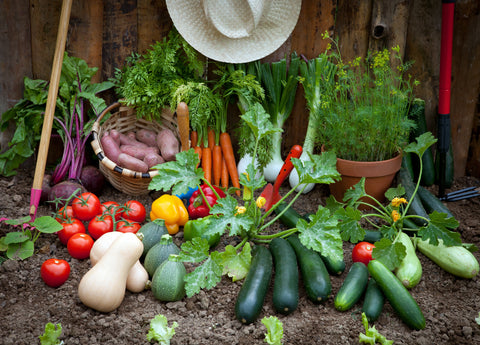Chinese cabbage, also known as Napa cabbage, is sweeter than traditional cabbage varieties. This Asian variety is also easy to grow in family gardens: it is more exotic and delicious. The following content also has some reference value for raised garden beds.
Best Chinese Cabbage Variety
Napa cabbage plants have large rectangular leaves that tightly wrap around the head of the plant. The stems are usually white, with light green leaves sticking out and yellow flowers. They carry the common cross petals found in other plants of the Brassicaceae.
Some cabbage plants have loose heads, while others twist more tightly. However, they tend to grow to about 15-18 inches tall.

There are many varieties to choose from, but the best types of Chinese cabbage include:
English News: This late season variety has glossy leaves and strong disease resistance.
Blues F1: an early season variety, very suitable for planting in spring. It has blue-green leaves and is resistant to disease and bolts. It only takes about 57 days for this variety to grow.
Monument: mid season variety, tall, narrow head. It takes about 80 days to grow, which is the longest time, but this variety resists bolt connection.
How to plant Chinese cabbage
When to plant Chinese cabbage depends on the type of planting you choose. If you plant in the spring, most plants will perform well while the soil remains cool. In order to harvest in autumn, you need to plant another crop at the end of summer.
This type of cabbage is biennial, which means it can grow in cold winter and has the right cover. It can endure a little frost, but too much is harmful to plant health. This cabbage thrives in the hardy 4-7 areas of the USDA.
sunshine
Make sure your cabbage plant is in a sunny location. Partial shade is OK, as long as they receive at least 4-5 hours of direct sunlight and sufficient water every day.
Soil
This kind of cabbage has a longer growing season than many plants and needs nutrient rich soil. It is strongly recommended to use improved and well drained soil containing several inches of organic matter in the form of compost or manure. The soil needs to be well drained, but still retain moisture.
For best results, add aged compost to the planting bed before planting cabbage. Then compost again in the middle of the growing season.
Although the pH balance is not a big problem when planting this vegetable, it is best if it is balanced around the pH value of 6.5-7.

Space between plants
It is estimated that each family member will plant about 6-8 plants, and choose the number of plants you want to plant according to your specific needs and eating habits.
If you choose to plant Chinese cabbage in spring, the best way is to directly sow. You can also start them in biodegradable paper or peat pots indoors about 4-6 weeks before the last frost of the season. This cabbage is difficult to transplant, but a biodegradable pot will help.
After the last freezing in your area, plant the plants outdoors, and ensure that there are row covers to protect the plants from accidental temperature drop.
Planting seeds directly into the garden is the simplest method of planting, as seedlings are usually hit immediately. Ensure that each plant has at least 40 cm of space in all directions. They should be sown about 1/2 inch deep, at least 6 inches apart. If you plant cabbage in rows, space them 30cm apart and 60cm apart.
You can also plant Napa Cabbage in containers at least 8 inches in diameter. A large container at least 10 inches wide is ideal. Growing in the container allows you to move them to a safe environment when winter comes. However, they are very sensitive to heat, so when the weather is warm, be sure to put the pot in a cool place.
Depending on the variety, your cabbage should be ready to harvest about 50-85 days after planting.
Germination time
Napa cabbage usually takes about 70-80 days to fully mature. Once the head is about 20 inches tall and about 5 inches or more around it, it will grow to the size of an adult.
Because the weather is unpredictable, this time may also vary depending on the season you plant. For example, autumn is the best season to grow this kind of cabbage, because plants grow better. Early spring may bring unpredictable frost or colder temperatures at night, which will cause plants to start sowing and bolting. The temperature rise signals the cabbage that it is time to stop growing.
It is not impossible to plant this cabbage in spring or early summer. Please note that doing so may result in more obstacles that you may need to skip, depending on the weather. Planting in the middle of summer or autumn will make the plants fully mature when the weather is cool.
You can check the maturity of cabbage heads by gently squeezing them. A mature head feels dense and hard.

How to take care of Chinese cabbage
Napa cabbage doesn't need much care. Therefore, taking care of your cabbage variety is simple: it really only needs a little ordinary water.
Make sure the soil is always moist. When the weather is hot, make sure to water the cabbage every day and keep it away from direct sunlight for more than 8 hours. Any drought period will lead to bolted connection, which is the way plants try to reproduce before harvest.
If you improve the soil, you usually do not need fertilizer. However, if you use ordinary pot soil mixtures or cabbage begins to suffer from nutrient deficiencies, try using fertilizers with high nitrogen content. Soybean meal or fish lotion is a simple method to increase soil nitrogen content.









